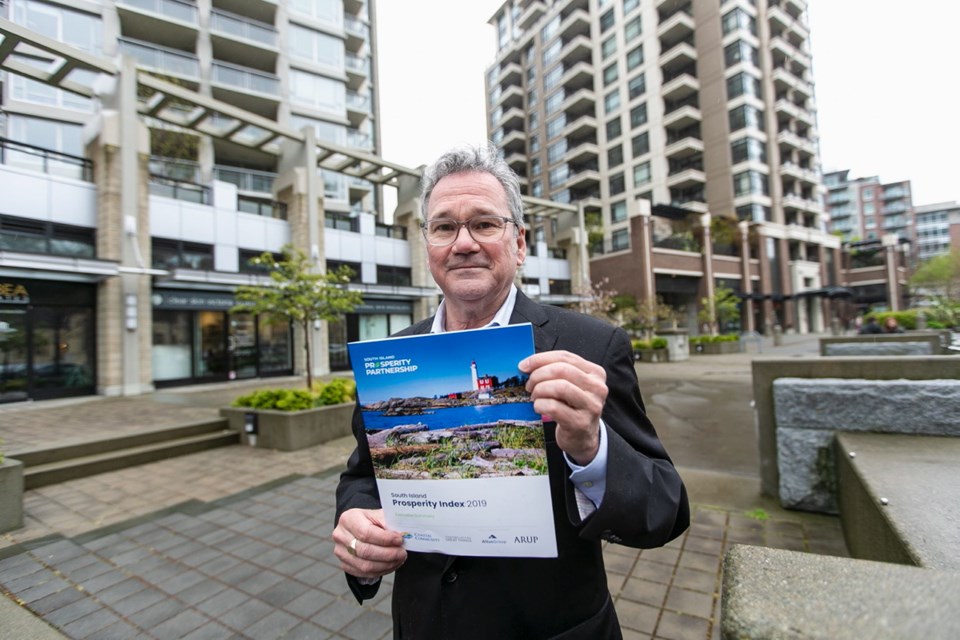Greater Victoria’s economy is performing well on a number of levels, but it hasn’t effectively dealt with homelessness, affordability and transportation, according to the latest prosperity index released Thursday by the South Island Prosperity Project.
The index, which uses more than 100 indicators to paint a picture of the region’s long-term progress, suggested little headway has been made in many areas since the first index was released in 2017.
Dallas Gislason, director of economic development with SIPP, said there were no real surprises in this year’s index. He said they were disappointed to see a small immigrant population —18.3 per cent of the population compared to 26.9 per cent in other comparable cities — as well as an increase in violent crime and continued problems with transportation and affordability.
Gislason said the index, which offers a glimpse at the region’s economic health, as well as making comparisons to other cities across Canada, is a tool to help attract capital investment to the region while determining Greater Victoria’s key selling features and highlighting problem areas.
Gislason said given SIPP has knit together a group of municipalities, First Nations, large employers and institutions, it can use the tool to set long-term goals and measure progress along the way. “It shows how we are doing relative to where we want to be,” he said, noting when the index reflects problems the group can then react and tackle the problems with new policies or programs.
“It can highlight systemic barriers that can get in the way of growth or goals,” he said.
This year’s index gave Victoria mixed reviews for its economic resiliency as its diverse economy drove one of the lowest unemployment rates in the country.
But while it scored well when it came to the number of full-time employees per capita, when compared to the average of other cities in the country, it fell short in terms of immigration and the percentage of the population living in poverty.
Similarly, the grades were mixed in terms of transportation, which was highlighted as a problem when the first index was released in 2017.
Compared to peer cities, the region enjoys shorter commutes, but it still suffers from a lack of infrastructure, including bike paths and high-capacity public transportation.
In areas where the region scores well — the environment and human health — there was either little change from measures taken in 2017 or there was some deterioration.
For example, the number of homeless per 100,000 people jumped to 398 from 304, well above the peer-city average of 299, and the ratios of shelter or rental costs to median income were also above the peer-city average.
While Victoria scored better than the peer group in terms of indoor and outdoor recreation space, it also saw increases in homicide, violent crime and suicide rates.
Environmentally, the region is performing well, according to the index, with measures looking very similar to 2017.
The region scores particularly well in terms of greenhouse gas emissions compared to other cities.
Gislason said he liked seeing how diverse Victoria’s economy has become.
Helped along with the explosion in high-tech and the rebirth of shipbuilding, the region is much more than tourism, the civil service and the Royal Canadian Navy.
“It was also exciting to see that our rental housing as a percentage of new housing starts is up,” he said, noting after an acute shortage, nearly 50 per cent of all starts are now rentals.
That’s important as the city grows and tries to attract young people to work in the tech sector or to its post-secondary institutions, he said.
Gislason said the index reflects the good and bad and is a way to remind us to do better.



